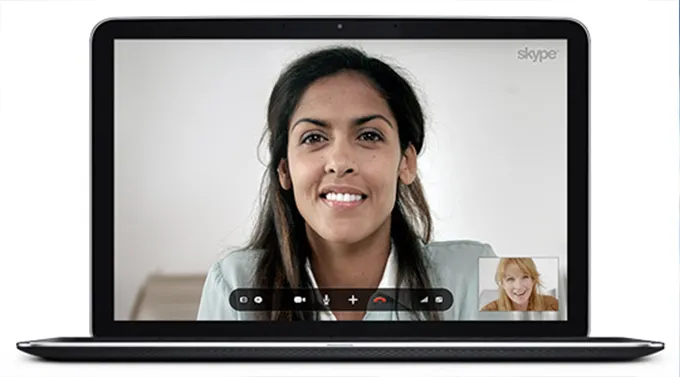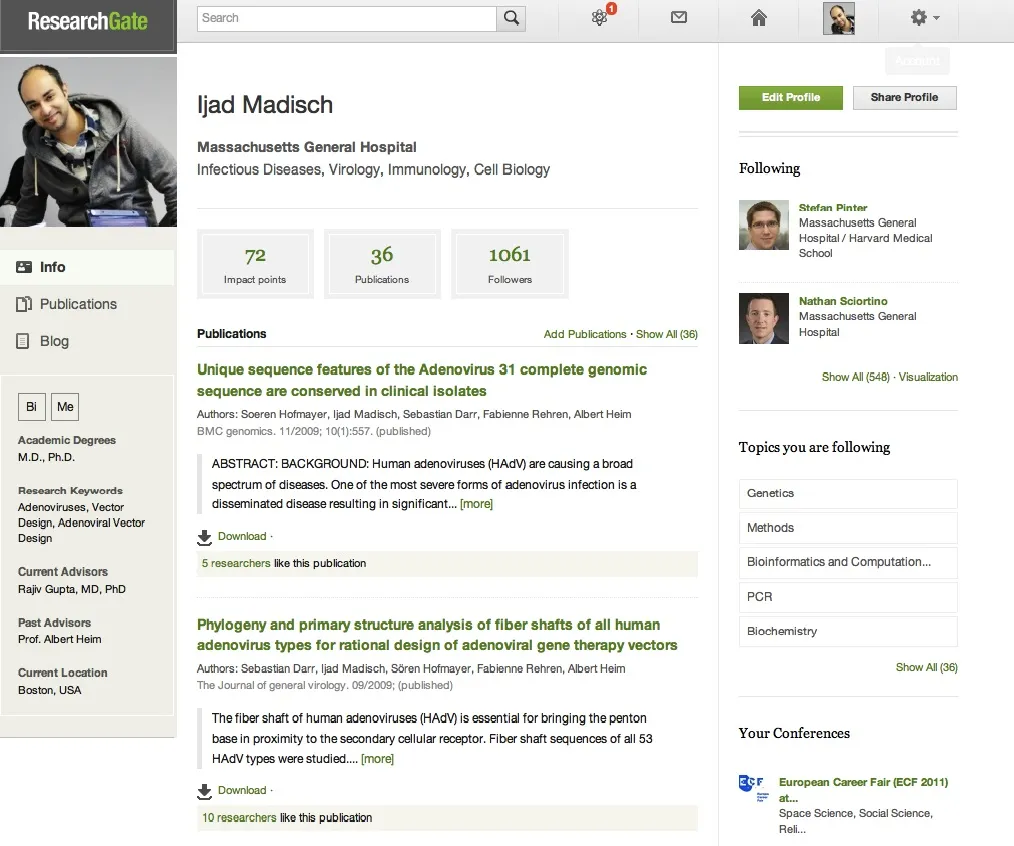NIH Alumni: Where are they now? Staff Scientist
Name: Anna Burkart Sadusky, PhD
Job Title & Company: Staff Scientist, Omeros Corporation
Location: Seattle, WA
How long you’ve been in your current job: Over two years
Postdoc Advisor, IC: Jurrien Dean, MD; NIDDK, Development Biology Lab
What do you do as a Staff Scientist?
As a Staff Scientist, I initiate, direct and execute technology development projects. Basically, I design and perform experiments at the bench utilizing hypothesis driven research. These experiments include cell-based assays as well as animal research models to support our drug discovery pipeline. As a Staff Scientist, I am expected to work independently and maintain a broad knowledge of state-of-the-art scientific principles and theories. I am expected to write technical reports and present my findings to the research team on a routine basis. I am also tasked with presentations to directors and senior members of the company, including the executive board. As a small business, we are eligible for a number of public and private grants, so additionally, I am involved with grant writing to obtain funding for various research projects. Our company also protects our intellectual property by filing a number of scientific patents, and I am responsible for writing the scientific background for several of these patents.
What do you research?
I was hired primarily to support G protein-coupled receptor (GPCR) research and development. GPCRs mediate key physiological processes in the body, and of the 363 characterized GPCRs, only about 46 are currently targeted by marketed drugs. These GPCR-targeting drugs represent 30-40% of all drugs sold worldwide, thus there are a number of GPCRs that still could be targeted for drug development. Omeros uses a proprietary high-throughput cellular redistribution assay to identify small-molecule compounds that target GPCRs. It is our hope that these small molecule compounds will lead to the development of drugs that can act at these receptors which have been linked to a broad range of indications, including cardiovascular disease, asthma, diabetes, pain, obesity, Alzheimer’s disease, Parkinson’s disease, multiple sclerosis, schizophrenia, learning and cognitive disorders, autism, osteoporosis, osteoarthritis, and several forms of cancer.
What has been the hardest aspect about transitioning into this career?
Having such a broad scientific focus has been the hardest transition for me. In graduate school and my postdoctoral fellowships, my research was focused to one field, namely reproductive physiology. At Omeros, I am expected and relied upon to become the expert for several different research areas, including cancer, multiple sclerosis, and metabolic disorders. Even within cancer, my projects have targeted esophageal cancer, glioblastoma, and leukemia. At Omeros, I have to be knowledgeable about these different research areas and I have to be prepared to leap quickly from one project to the next. Additionally, although I have input on these research projects, ultimately the executive board makes decisions regarding which projects move forward through the drug discovery pipeline.
What are the most important skills that you utilize in your current position?
A strong understanding and foundation in the principles of cell and molecular biology are essential requirements for my position. Being able to think critically and creatively is also important. Staff scientists are hired because of their PhD training. They are expected to work independently and efficiently. Management and senior staff make important decisions regarding the direction of discovery research by relying on their scientists.
Flexibility and adaptability are also important. As I mentioned before, as a staff scientist I balance several different research projects and I have to be prepared to move quickly between cancer research to central nervous system disorders to metabolic disease. I am constantly reading papers to keep current with these research areas as well as up to date with research methods.
What are the most important soft skills needed for your position?
Presentation skills are extremely important. I meet with many different people on a weekly basis, some of whom do not have a scientific background. Therefore, my presentations must change depending on the audience, whether they are scientists, company board members, outside business people, or patent attorneys. In any given week, I can present the same information multiple times with different presentations every time.
Writing is also an essential skill for this position. As I mentioned previously, grant and patent writing are tasks that I am assigned. Since we are a smaller biotech company (~100 employees), we are all extremely busy. People rely on my writing abilities and do not have the time to rewrite material that leaves my office.
My best advice to postdocs is to sharpen these soft skills during your postdoctoral fellowship. Force yourself to select oral presentations instead of poster presentations when you sign up for conferences. Look for opportunities to write not just scientific papers, but also grants or articles for the general public, such as in newsletters or magazines.
What is your favorite aspect of your current job?
I love that I am constantly learning in this position. I get to research new techniques and explore such vastly different areas of science, which is very exciting. Also, there is an immense satisfaction knowing that your research can one day lead to the development of drugs that can treat human diseases.
What was your job search like?
About six months before I moved to Seattle, my husband, who is an active-duty Army officer, found out that he would be stationed at Joint Base Lewis-McChord (JBLM), located approximately 40 miles south of Seattle, WA. I started my job search immediately because I was unsure about the Seattle biotech job market. Over this six month span, I applied to any science job that popped up in a 70 mile radius of JBLM, and in total I applied to close to 80 jobs. I found many of the job postings online. Additionally, I had been a postdoctoral fellow at the University of Washington in Seattle from 2005-2006, and I was fortunate to have developed and maintained a professional network here in Seattle. These connections in Seattle kept me apprised of job openings and in some cases forwarded my resume directly to hiring managers.
During my job search, I was also fortunate to have attended several biotech job fairs in the DC metro area. At one of these job fairs, there were companies present that had offices/locations in Seattle and I was able to speak directly with hiring managers for these Seattle locations. These hiring managers were helpful because they told me that the hiring landscape in Seattle was very insular and that the PhD job market was saturated. Many of the hiring managers mentioned that their companies were only interviewing Seattle-area applicants, and some job postings included that only local residents should apply. In my cover letters I would emphasize that I was relocating to the area, including a specific time frame for my relocation, and also including a Seattle area mailing address (which the sellers of our house agreed to let me use two months before we closed on our house).
I found the job posting for Omeros online and sent my cover letter and resume to the email address they provided for the hiring manager. The hiring manger reached out to me after reviewing my materials and invited me for an interview the first week following my relocation.
What was your interview like?
I actually had a total of three different interviews. In my first interview, I met separately with three people, including the supervisor for this position. All three were interested in my research background, specifically regarding the scientific design and approach for my projects. They also inquired about my reasons for pursuing a career in biotech and for my relocation to Seattle. They were extremely interested in my publication record, specifically how involved I was in the writing, submission and review process. Each interview lasted approximately 30-45 minutes and after meeting with all three people I was asked for a list of references. After contacting my references, I was invited back for a second interview to give a presentation on my postdoctoral research at the NIH. I met with all the senior scientific research staff, essentially everyone with a PhD in the company, including the original three people I had met during my first interview. For my third interview, I was invited to meet directly with the CEO of the company. Following all three interviews I was then offered the position.
In hindsight, how would you have done your job search differently?
In hindsight I probably wasted a lot of time applying to positions for which I was overqualified. Because my job search was remote and geographically limited to Seattle, I applied to any scientific job posting in the Seattle area. However, my experience in biotech has shown me that when a position lists a bachelor’s degree as the education requirement, there is little chance they will a hire someone with a PhD. I probably could have eliminated about a quarter of the jobs I applied for if I had focused solely on the jobs that required a PhD.
I also would have reached out to more people for informational interviews. I mistakenly believed that I had to meet with people in person for these informational interviews and rather than expanding my professional network, I relied mostly on prior connections. In the past couple of years, I have been contacted for information interviews by numerous postdocs, and nearly all of these have been over the phone or email.
Any last bits of advice?
At the PhD level, you are no longer merely hands at the bench anymore. You will eventually play a larger role in making decisions for guiding research down the company pipeline. Your time at the bench will diminish and you have to be prepared to go from the bench to the boardroom.
For your job search, don’t be afraid to reach out to people. Most people are willing to share their experiences and to offer help. It’s up to you to establish those connections. Lori Conlan always emphasized the importance of networking. Listen to her and take advantage of OITE and all of their resources!




